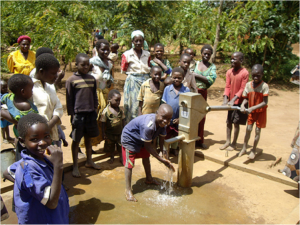This is a follow up of my last post where I discussed the Millenium Villages. In the last one I discussed the problem of sustainability (is it a good project in the long run?). Here I am going to discuss the problem of scaling up the project.
I feel like the project is too ambitious when it suggests that the model implemented in each village could be scaled up to any district or any country. Even thought the villages are supposed to be a pilot and a “model” for rural development in Africa, their very nature is to have a local and one time impact. The project is treating each village as a separate island in a sea of poverty and under-development. Indeed, each planning team includes local villagers and farmers, and promotes the participation of the community. Therefore, the project focuses directly on the village’s specific needs. While this community-based development strategy is good and necessary to have a local impact, it also misses the whole external and global environment.
If this external context is ignored (and by that I mean if the external circumstances affecting the villages are ignored-like the political environment and the economic conditions) it is doubtful that scaling up the project will be as effective as it could be. This ultimately means that the project is doomed to fail as a large or small scale rural development strategy that could be implemented anywhere on the African continent. You cannot generalize a development strategy when you have such specific circumstances in each village. It is a strong example of a good local initiative, and it should stay local.
The MVPs makes reference to the green revolution of India, implying that the absence of new agricultural technologies in Africa is what has delayed rural development and wealth on the continent. But Indian farmers face today difficult circumstances too, and the green revolution does not guarantee success. African farmers- just as Indian farmers- need to become much more competitive. This is difficult due to unfair international competition (US and European farmers receive large subsidies, which make them less expensive) and in any case, it would require much more investment and education that one offered in a 5 years for systematic continent wide change to occur.
To sum up, it is my impression that some of the criticisms to the MVP make reference to the “opportunity cost” of having to invest in those villages. Could those resources have been used better? It is a difficult question to answer.
to the “opportunity cost” of having to invest in those villages. Could those resources have been used better? It is a difficult question to answer.
But one thing is for sure. The MVPs are having short-term benefits that are improving individual lives in ways that would seem otherwise impossible. It is one of the reasons that I sympathize with the project. It nevertheless has some flaws. There’s a need for a detailed examination of the implementation of the project to make sure that it has a sustainable (long-term) impact. Also, there is a need to really contextualize the project in the broader national and global environment. It is all about acting locally but thinking globally.
Finally, planners of the project should be more cautious when trying to scale up MVPs. It is just not designed to have such an impact. The MVP project is unlikely to be the developing nation’s solution, or an agricultural panacea for African nations. But because it is a bold and appealing project to end rural poverty, it has gathered financial support and has had significant short-term impact. Which is always good, but not good enough.
Julia Naime is a Program and Research intern with the SISGI Group.


